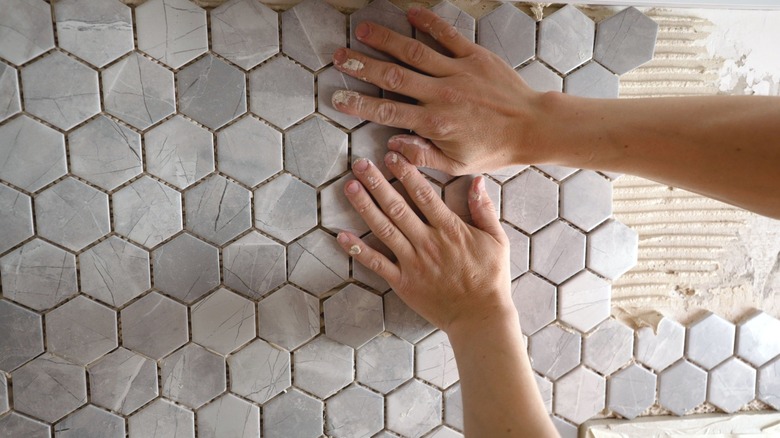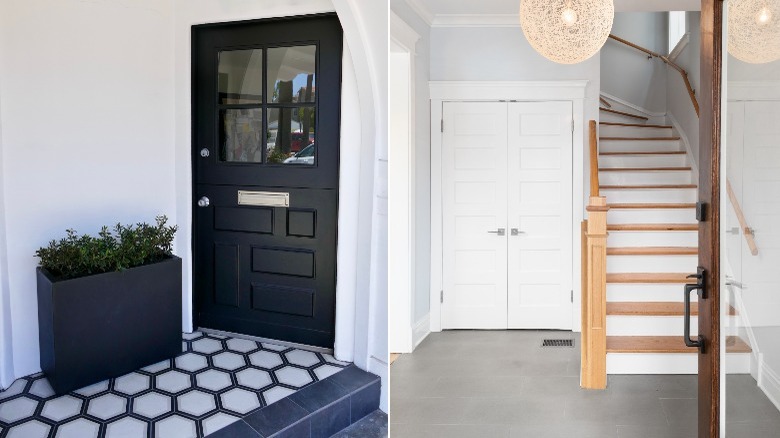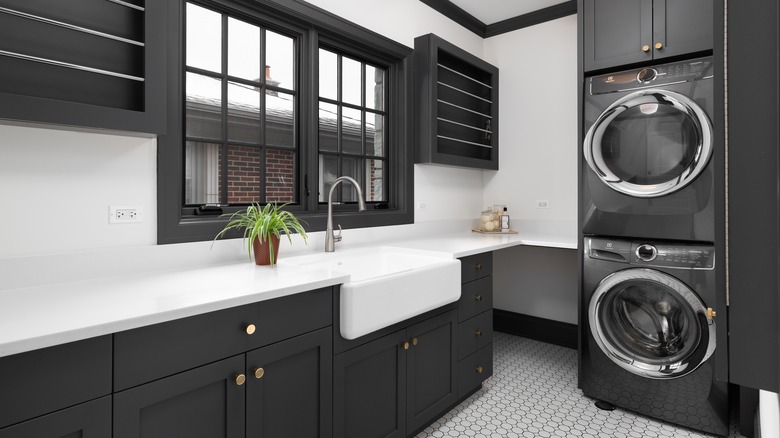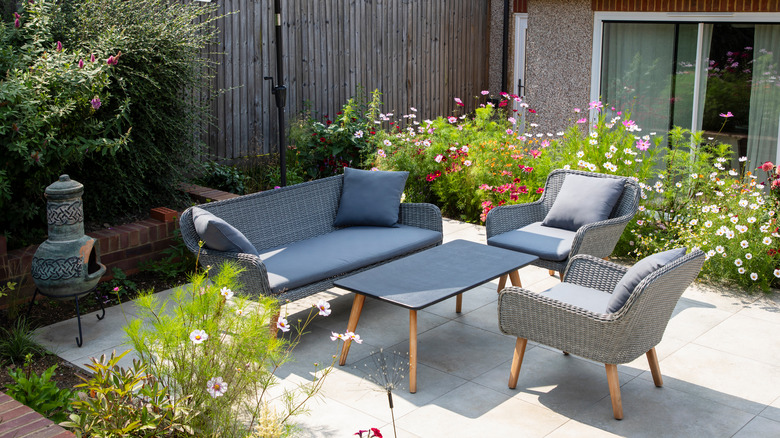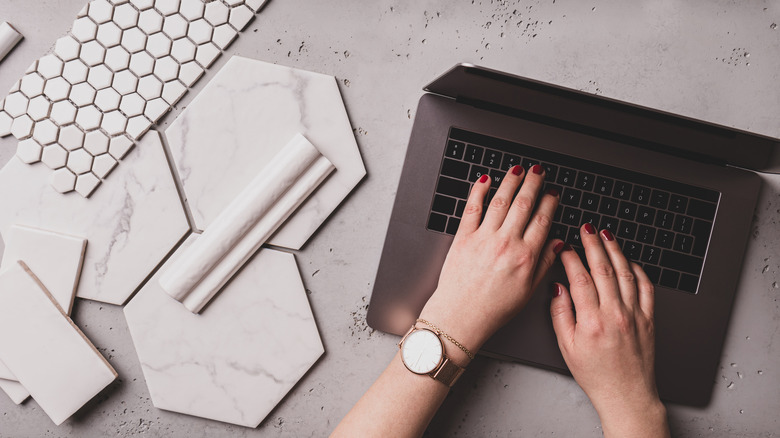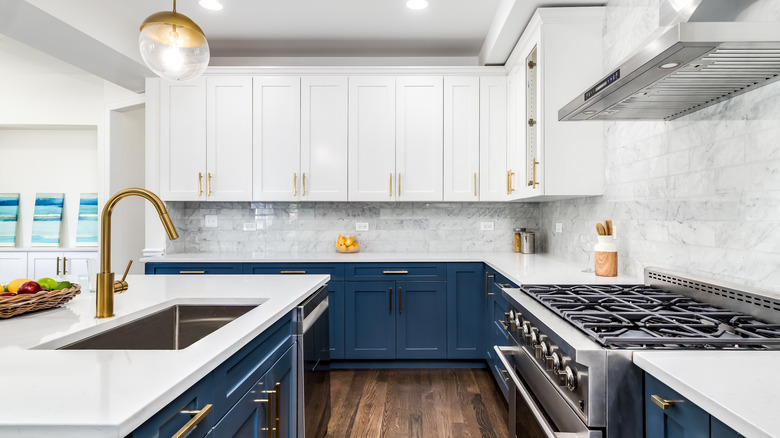Creative Ways To Use Tile In Unexpected Places In Your Home
Despite being created centuries ago, tiles are still widely used in kitchens and bathrooms. Whether used in a traditional manner or to add a little flair to a particular room, tile is an excellent solution for homeowners looking to customize their homes and express their creativity.
Available in a variety of shapes, sizes, colors, and materials, there seems to be an endless amount of tile to pick from according to HGTV. How you go about using them in your home is completely up to you. Regardless of whether you use a large amount for a big project or you use leftover tiles for a smaller project — tile is all about customization and innovation, explains Tile Club.
As for where you use tiles in your home, customization also comes into play, as there are several spaces in your home where tile is expected according to Mercury Mosaics. But there are also lots of unexpected places around your home where tile can be used creatively and may add an extra layer of sophistication to your home.
Entryways
There are multiple design strategies that can make your entryway memorable. Utilizing tile in this area will not only make it easier to maintain, but it will also guarantee that your home makes an immediate impression. It's best to start by figuring out which portion of the space would benefit the most from tile.
Entryways can benefit from the addition of tile as they tend to be fairly simple in terms of design features, notes The Tile Shop. One of the best ways to incorporate tile in any entryway is through the flooring. Due to its efficiency and durability, tile is the ideal choice for foyers, hallways, and exterior areas like covered porches and vestibules.
As for entryways that double as mudrooms, a tiled floor may seem like a no-brainer, but what about tiled decor? Whether you opt for a mosaic mirror, a wall hanging like this from Walmart, or even DIY-ed tile doors on built-in cabinets and cubbies, there's no denying tile's adaptability.
Laundry rooms
While laundry rooms may seem uninspiring in terms of design, there are still ways in which you can creatively use tile in the room, particularly on your walls. A tried and true design feature that was particularly popular in the 1950s, is wainscoting, suggests TruBuild Construction. Tile wainscoting can be done with many different types of tiles, but if you're going for a clean, minimal look, plain white tiles may be your best bet.
Another great way to use tile in this room is in the form of an accent wall. Not only will this feature draw your eye to the focal wall, but it can also add drama to the space and make the room feel larger, especially if you install the tile from floor to ceiling.
If you don't want tiled walls, but still want tile in your laundry room, you might also consider the more unexpected option of tiling your ceiling. As suggested by Tile Bar, ceilings generally don't get much attention, but in rooms where wet conditions are expected, a tiled ceiling may actually be a good thing.
Sunrooms and patios
While tiled floors are a popular choice for your sunroom or your patio, there are alternative ways that you can utilize tile in these spaces. One way, in particular, is with your furniture, more specifically your tables. Generally easy to clean, tiled tabletops are especially useful outside because of their durability in terms of heat, absorption, and resistance to natural wear and tear, according to Matrika Milano.
Another innovative tile use for indoor and outdoor spaces is to decorate your flower pots with mosaic tiles. Decorating with these tiles can be done by anyone and can help add a bit of color to your home, notes British Ceramic Tile. Moreover, Popular Mechanics recommends using them on outdoor fireplaces, fire pits, and chimineas, along with walkways and birdbaths.
However, if you tend to favor more traditional tile designs in your indoor-outdoor spaces, you should also consider changing the tiling under your furniture so that it gives off the appearance of a rug. Known as an inlaid rug, this design is often installed in entryways but can be applied in any outdoor space.
Offices
While minimal workspaces aren't uncommon now, having a single room serving as an office may just be your best opportunity to test out the versatility of tile. While a home office may be an unexpected room for tile to be in, its presence can actually help to separate the office from the rest of your home, while also customizing the space and acting as a source of inspiration, explains Why Tile.
Opting to switch out the flooring in your office for tile will allow you to further personalize the room to fit your design aesthetic and make the room easier to maintain. Alternatively, you could try adding tile linings to your shelving or crafting a few art pieces for a gallery wall. If you have a more spacious office in your home, another great addition would be a tiled coffee bar. This can be achieved in a multitude of ways, but if you don't have built-in cabinetry, a DIY-ed tile bar cart can work just as well, suggests Rachelle Alaine.
Kitchens
Despite being an area of the home where tile is expected, there are still a handful of ways to go about creatively using it in your kitchen. Considering that kitchens are all about cooking and entertaining, knowing what works best in the space and how to make it feel inviting yet organized is key, but keep in mind that too much of it can be overwhelming.
Because kitchens are customizable, they're prime rooms for mixing and matching tiles, so don't be afraid to switch it up in different parts of your kitchen — just remember to select tiles that compliment one another when doing so. This can be done in several ways, such as adding a niche with ceramic tiles, or by following TZR's recommendation of tiling the front of your island.
If you have any leftover tile in your home, you can use the remnants to make a tray or even some matching coasters for your kitchen. It also doesn't matter whether you're a new DIYer, as these projects are very simple and can be done with just about any kind of tile.
